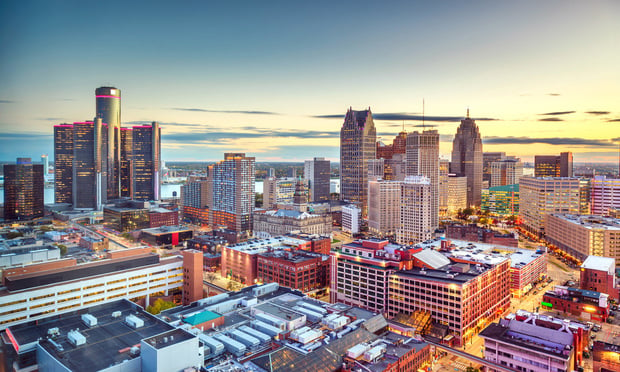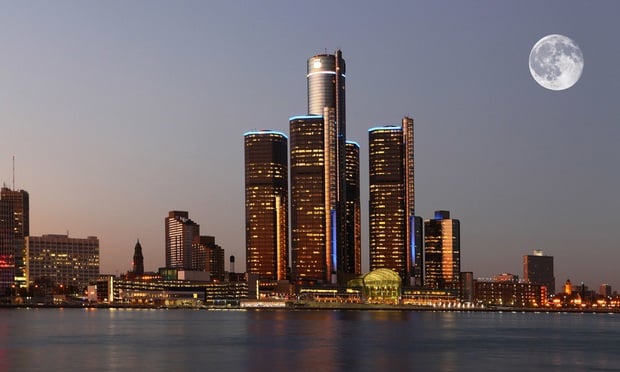Union officials, led by Teamsters president James P. Hoffa, are calling the Detroit River Tunnel Partnership's proposal the "Jobs Tunnel" and say it would help protect as many as 84,000 manufacturing jobs in the Detroit-Windsor region. The partnership proposes to use a 100-year-old two-lane train tunnel that passes under the river to build a new truck tunnel to help ease the bottleneck that now exists for trucks at the Detroit-Windsor, Ontario, border.
"Hundreds of trucks, at this moment, are lined up on the too small, too limited, too outdated Ambassador Bridge," says Teamsters spokesman Bill Black.
The proposal for the tunnel, which would be the first new Canada-Detroit border crossing constructed in more than 50 years, has yet to receive needed governmental approvals on either side of the border. The biggest hurdles to be crossed appear to be on the Canadian side, where the city of Windsor has raised some objections. The tunnel plan calls for a special trucks-only limited access road that would link the tunnel to Highway 401, about 6.4 miles away from the tunnel. On the US side, I-75 is less than a mile away from the tunnel entrance, which is next to the old Michigan Central Train Depot, near the Corktown district of Detroit.
The new tunnel would be 3,000 yards long and 27.5 feet in diameter. The existing train now handles about 24 trains per day. The partnership predicts the new arrangement--if built--and its plan for 28 customs inspection booths could handle 7,600 trucks per day, in addition to the trains.
The Teamsters, Greater Detroit Building and Construction Trades Council and other unions on both sides of the border say they would help lobby for government approvals of the plan. The Partnership say they would use only union labor to construct the tunnel, which is expected to cost about $400 million US and could be completed in about five years, says Michael Sheahan, CEO of the tunnel.
"When you see five-mile long lines of trucks backed up in the streets of Windsor and on I-75, that's commerce backed up," Hoffa says. "When Chrysler, Ford and General Motors want to build a new plant, they look at these kinds of issues."
Sheahan says about $92 billion in commerce passes across the Detroit-Windsor border every year. In Detroit, trucks are forced to use one lane coming and going across the Ambassador Bridge. Commercial trucks are too large to use the Detroit-Windsor Tunnel. The current rail tunnel continues to carry freight trains, but is under-utilized Sheahan says.
Sheahan says the Partnership would use all private funds to pay for construction of the tunnel and its operations, though it would apply for some federal loans on the US side and some tax credits on the Canadian side.
© 2025 ALM Global, LLC, All Rights Reserved. Request academic re-use from www.copyright.com. All other uses, submit a request to [email protected]. For more information visit Asset & Logo Licensing.






